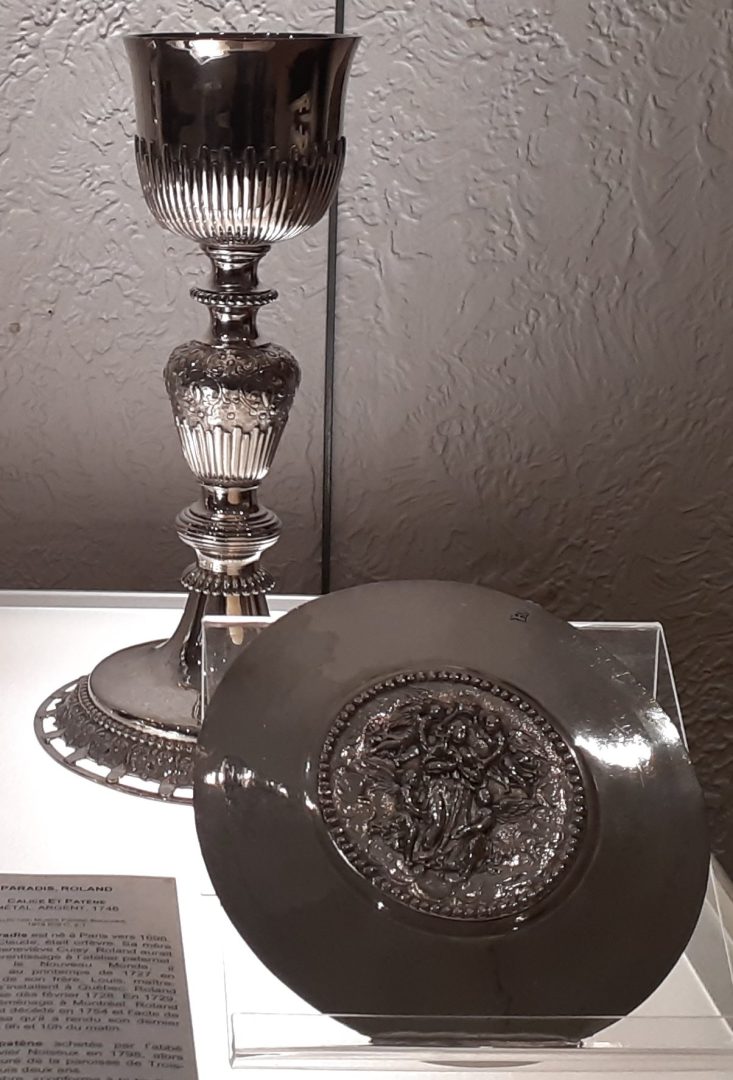Chalice and paten purchased in 1798 by Father François-Xavier Noiseux, then parish priest, to be used in the Immaculate Conception parish church in Trois-Rivières.
In an article published in La Patrie on November 26, 1950, dedicated to goldsmith Roland Paradis, Gérard Morisset of the Royal Society of Canada describes the chalice in more or less these terms:
With an understated style in keeping with the Grand Siècle tradition, this chalice has a spacious yet shallow bowl. A corset of gadroons (large round folds) adorns its lower portion, which makes the bowl more robust. The false lower knot is surrounded by mouldings. The actual knot takes a unique precedence. The base bears an openwork frieze with a distinctive relief that required a rhythm punctuated with aplomb to produce.
Father Joseph-Gers Turcotte (1887-1975), a professor and choirmaster at the Séminaire Saint-Joseph and the Cathédrale de Trois-Rivières during the final years of his life, used this chalice every day to celebrate Mass. For a long time, however, this sacred vase was only used during the Mass for the Feast of Saint Joseph (March 19), the patron saint of the seminary, or when the bishop came to celebrate a Pontifical Mass at the seminary chapel.
In addition, in 1974, this chalice was loaned by the authorities from the Séminaire Saint-Joseph and exhibited at the National Gallery of Canada in Ottawa.
The artist’s stamp also appears on the paten.
As for the artist, Roland Paradis, he was born in Paris around 1696. His father, Claude, was a goldsmith. His mother was named Geneviève Cuisy. Roland would have done his apprenticeship at his father’s workshop. Attracted by the New World, he set sail in the spring of 1727 in the company of his brother, Louis, a master tailor. They settled in Quebec City. Roland got married in February 1728. In 1729, the couple moved to Montreal.
Roland Paradis died in 1754 in Montreal, and the death certificate specifies that he took his last breath between 9 and 10 am.
Musée Pierre-Boucher Collection
1979 809 O.2-1


